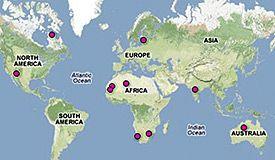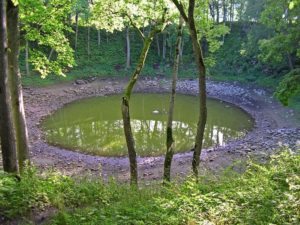Impact craters 🢔 Geological wonders 🢔 Categories of wonders
Wonder
Amguid crater
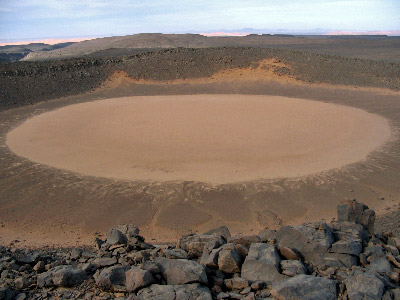
 In short
In short
One of the best-preserved impact craters on Earth – Amguid crater in Algeria – is also one of hardest to access. Some travelers report that this crater has been visited much less than the summit of Everest, at least in modern times.
 47.5%
47.5%
GPS coordinates
Diameter
Depth
Age
Map of the site
If you see this after your page is loaded completely, leafletJS files are missing.
 In detail
In detail
Amguid crater has formed in Lower Devonian sandstone in a remote part of Sahara, more than one hundred kilometers from the nearest inhabited place. One can not reach this place in a car. Travelers should walk towards the crater along guelta – a deep river valley with occasional pools of water. This area is pristine – with a wealth of prehistoric (unexplored!) landmarks and undisturbed wildlife.
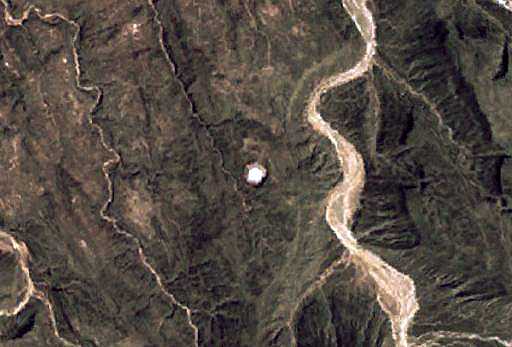
Amguid crater was mentioned in the scientific literature in 1953 (1) by French explorer Roman Karpoff – he noted that he has noticed a possible impact crater from a plane in 1948. French geologist Jean-Phillippe Lefranc reached the crater in the late 1960s.
As the crater looks little eroded and "fresh", scientists consider that it is younger than 100 thousand years but older than 10 thousand years. There is no research yet which would provide more exact data.
Nevertheless the structure of the crater clearly shows that this is an impact crater. The crater is almost perfectly circular, with steep walls. Amguid crater has raised rims, which are covered with sandstone blocks, often several meters in diameter. Research from space hints that ejecta fell mainly to the north-north-east, thus it is probable that meteorite was falling from the south-south-west.
Diameter of the crater (as measured in Google Earth) is 500 – 530 m, the approximate depth between the bottom of the crater and its rims is 65 m.
Crater has been partly filled with wind-blown sand – thus far we do not know the real depth of the crater below the layer of this sand. The central part of the Amguid crater is flat, covered with aeolian silts. These silts refract the light – due to this from the space it looks as if the crater has a white area in the center.
There are no reports of parts of meteorite from this crater but among the collectors in very small amounts is sold the exotic Amguid Crater Glass or Golden Moldavite – a melted glass in rare golden color.
References
- Roman Karpoff. The meteorite crater of Talemzane in Southern Algeria. Meteoritics, Volume 1., number 1. p.31. (1953)
Amguid crater is included in the following articles:
 Linked articles
Linked articles
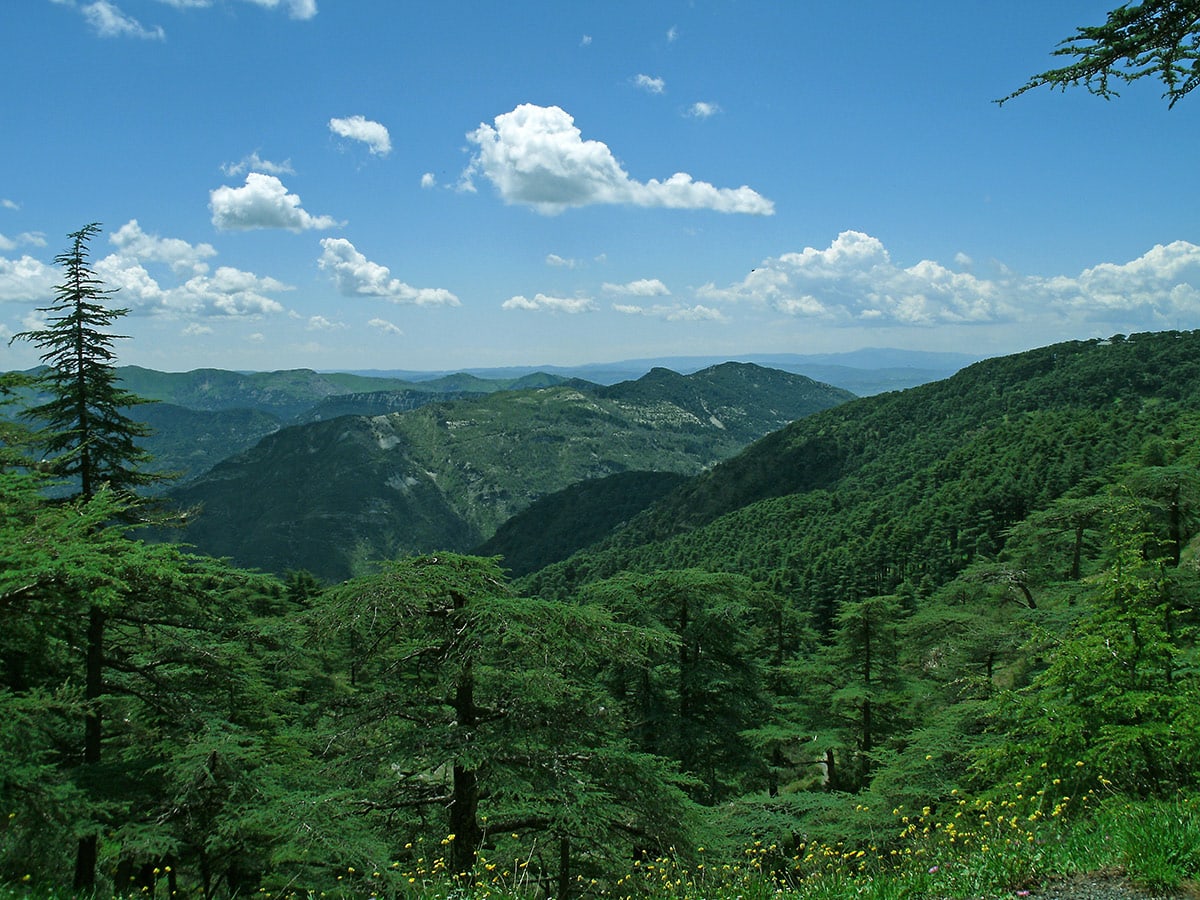
Wonders of Algeria
Algeria is the largest country in Africa. An unstable political situation prevents the development of tourism – but rest assured that there is a lot to see in this diverse country.
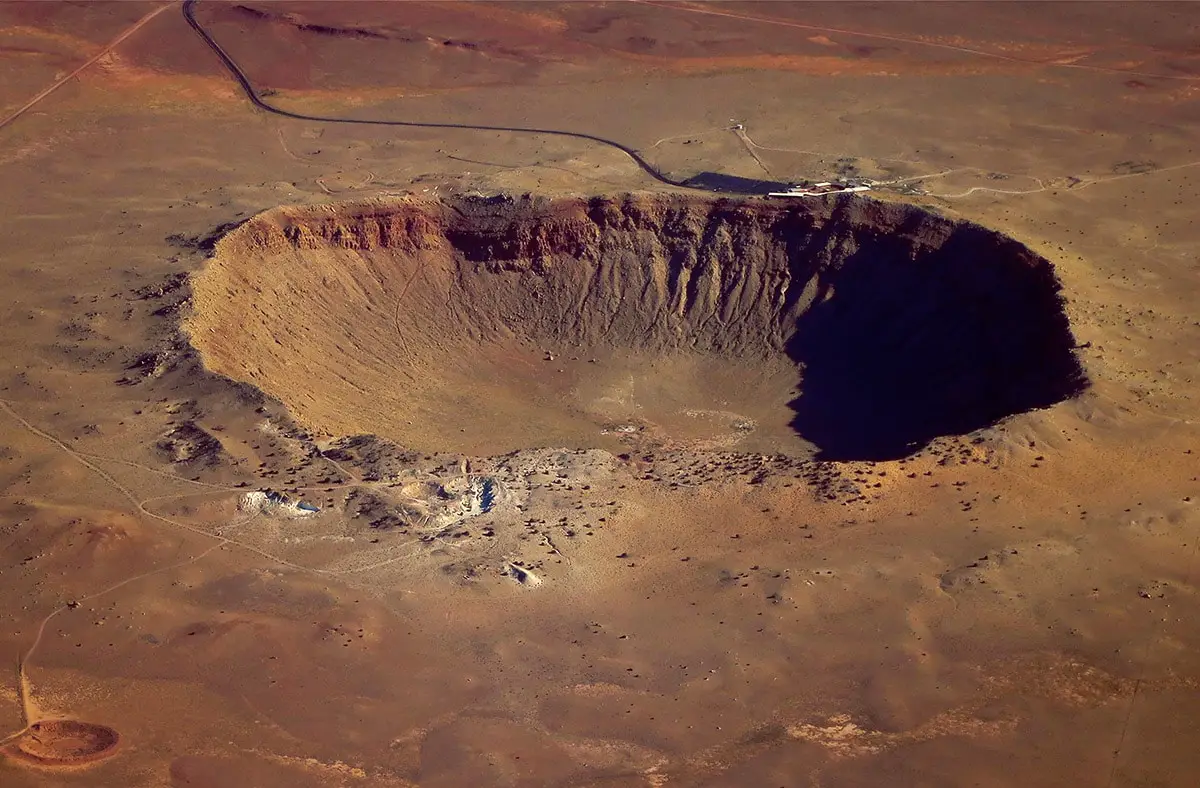
Impact craters
There are many pieces of solid matter flying around in space. And VERY frequently they fall on the surface of the Earth. There are estimates that every year on Earth fall 18,000 – 84,000 meteorites larger than 10 grams: e.g. one meteorite every 6 – 30 minutes.
This category includes outstanding impact craters – detectable scars on the surface of Earth left by a body coming from outer space. The category includes also meteorites – natural objects from outer space.
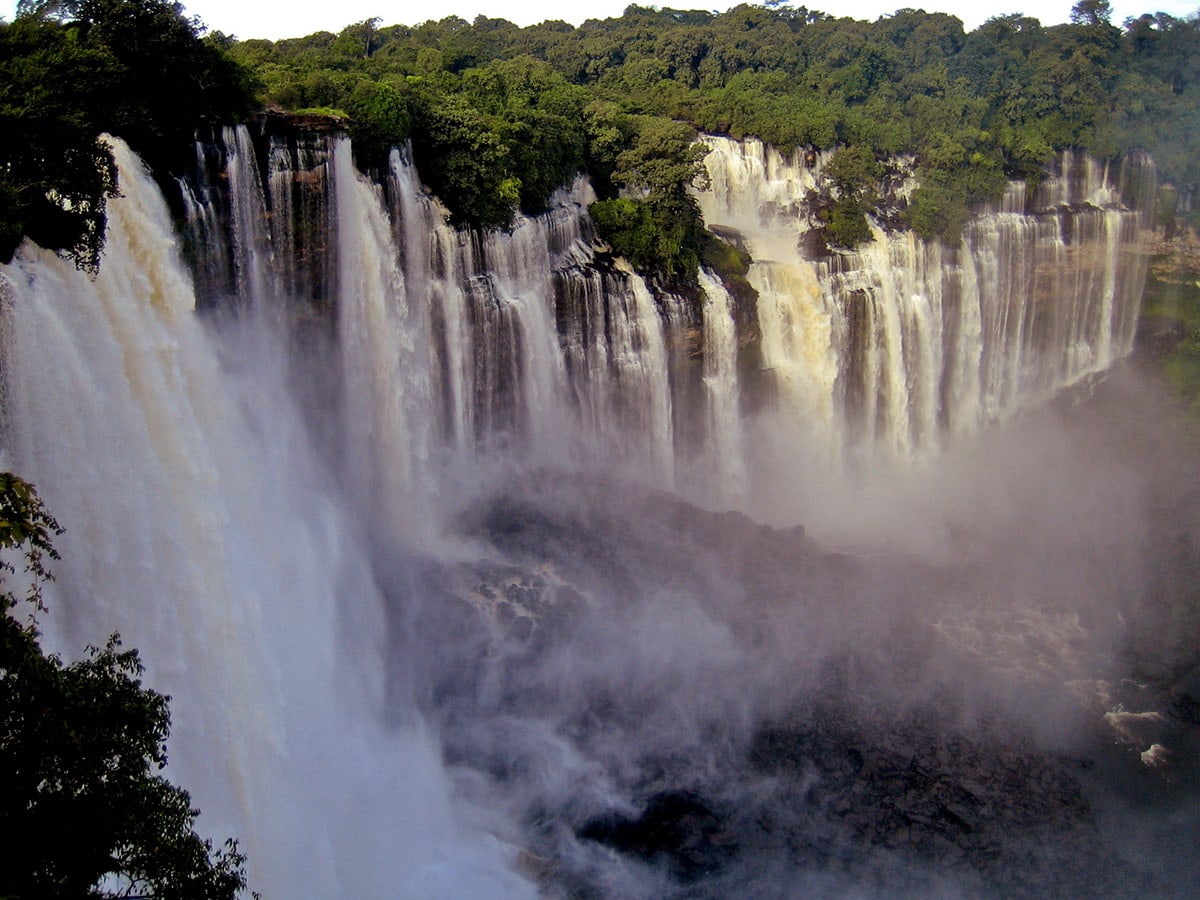
Wonders of Africa
Africa has many outstanding wonders and some of the most surprising ones are the heritage of Egyptian civilization, the vernacular architecture of the Sahel region, tropical ecosystems, and others.
 Recommended books
Recommended books
Africa’s Top Geological Sites
Africa is home to more than the Cradle of Humankind. It was the core of the ancient supercontinent Pangaea and comprises some of the oldest and most extraordinary geology on planet Earth. This detailed and colorful book features 44 of the continent’s most spectacular and interesting ‘geosites’, from Table Mountain in the south to the eroded necks and plugs of the Hoggar region in Algeria.
Exploration du Sahara: Les Deux Missions du Lieutenant-Colonel Flatters
This is a pre-1923 historical reproduction that was curated for quality. Quality assurance was conducted on each of these books in an attempt to remove books with imperfections introduced by the digitization process. Though we have made our best efforts – the books may have occasional errors that do not impede the reading experience.

